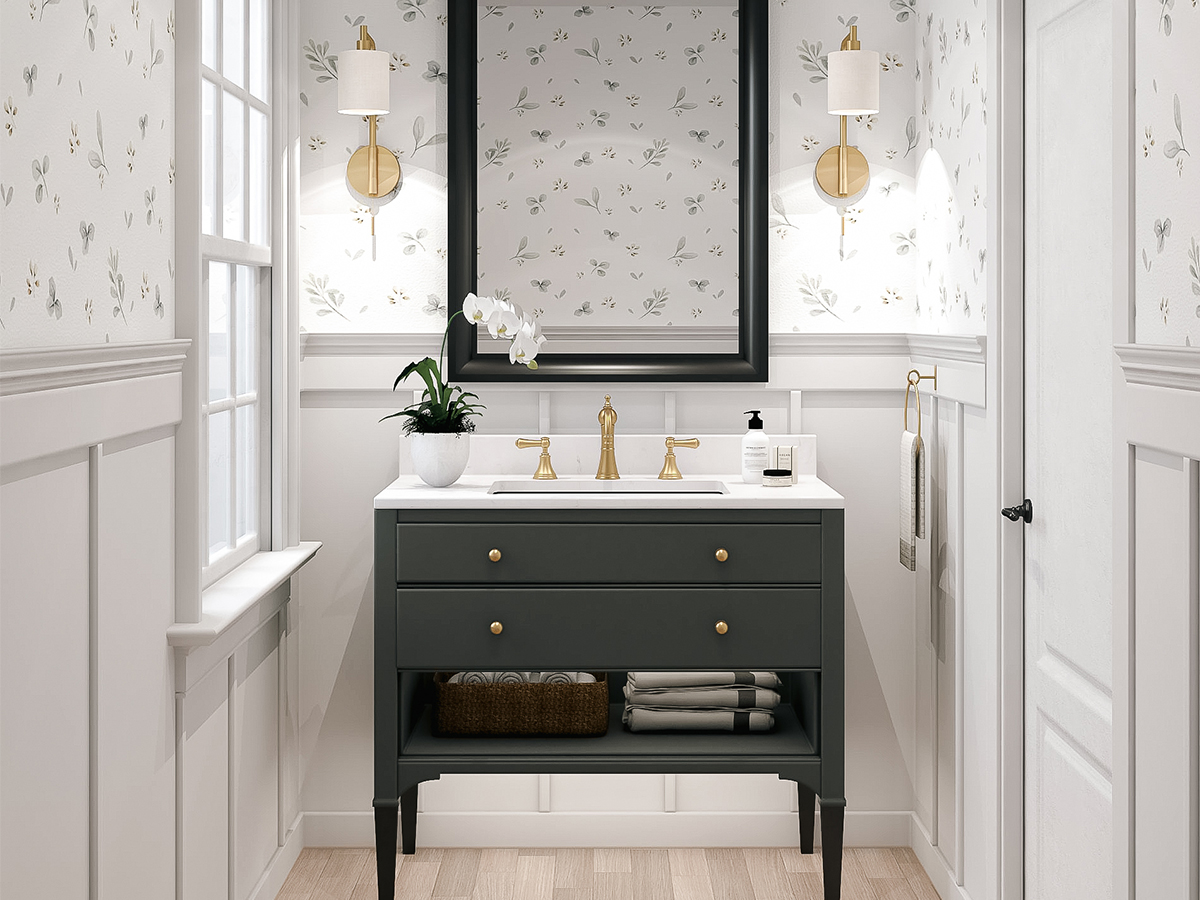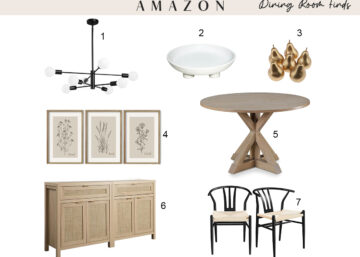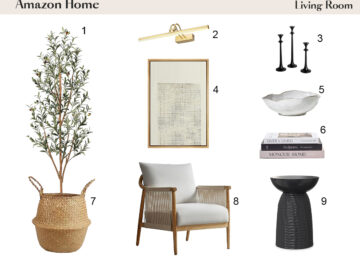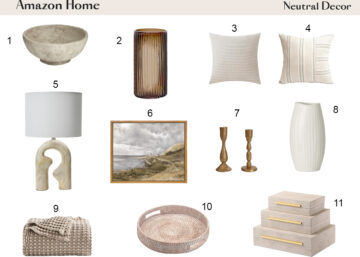Small Bathroom Design: Making the Most of Your Space
Understanding Spatial Dynamics
The Fundamentals of Spatial Dynamics in Small Bathrooms
In the realm of interior design, the concept of spatial dynamics is often reserved for expansive spaces where designers have the luxury of creativity without constraints. However, understanding spatial dynamics is arguably more critical in small bathrooms, where every inch matters. Small bathrooms pose unique challenges but also offer opportunities to create highly functional and aesthetically pleasing spaces through strategic planning.
The Impact of Dimensions and Layout on Usability
When it comes to small bathroom design, dimensions and layout are the foundational elements that dictate the usability and flow of the space. A well-planned layout ensures that the bathroom is not just a room with fixtures but a cohesive and efficient environment. The key is to think beyond traditional layouts and consider innovative arrangements that maximize every square inch.
For example, placing the shower in a corner and utilizing a curved or angled shower door can free up precious floor space. Similarly, opting for a wall-mounted sink or a compact vanity can create more room for movement, making the bathroom feel less cramped.
Evaluating the Space: More than Just Measurements
Accurately measuring the space is essential, but understanding spatial dynamics goes beyond the tape measure. Evaluating a small bathroom involves considering the existing plumbing and electrical layouts, the placement of windows and doors, and the natural light available. Each of these elements plays a crucial role in determining the most efficient and aesthetically pleasing layout.
A common oversight in small bathroom design is ignoring the vertical space. Walls and even ceilings offer valuable real estate for storage and design elements. For instance, vertical storage solutions like tall cabinets or shelving units can keep essentials within reach while maintaining a clutter-free environment.
Identifying Key Functional Areas
In small bathrooms, the primary functional areas include the vanity, shower or bath area, and storage. Each of these areas must be meticulously planned to ensure they do not encroach upon each other. A floating vanity, for instance, can create the illusion of more floor space while providing necessary storage. The shower area can benefit from built-in niches for toiletries, reducing the need for bulky storage solutions.
One seldom-discussed aspect is the importance of circulation space. In small bathrooms, it’s crucial to ensure there is enough room to move comfortably between different areas. This can be achieved by strategically placing fixtures to avoid obstructing the natural flow of the space.
The Role of Aesthetics in Spatial Dynamics
Aesthetics play a vital role in shaping the perception of space. In small bathrooms, choosing the right color palette, materials, and finishes can significantly impact how spacious the room feels. Light, neutral colors can make the space feel larger and more open, while reflective surfaces like glossy tiles or mirrors can enhance the natural light and create a sense of depth.
Innovative Design Solutions
In small bathroom design, innovation is the key to overcoming space constraints while maintaining functionality and style. By leveraging creative solutions, you can transform even the most confined bathrooms into efficient and visually appealing spaces.
Space-Saving Fixtures
One of the most effective ways to maximize space in a small bathroom is to select fixtures designed specifically for compact areas.
Wall-Mounted Sinks and Toilets
Wall-mounted sinks and toilets are a game-changer for small bathrooms. These fixtures are attached directly to the wall, freeing up floor space and making the room appear larger. Wall-mounted sinks, in particular, can be paired with sleek, minimalist designs that provide essential functionality without overwhelming the space.
Compact Bathtubs and Corner Showers
For those who prefer a bathtub, compact models are available that take up significantly less space than standard tubs. These smaller bathtubs are perfect for small bathrooms without sacrificing comfort. Alternatively, corner showers utilize awkward corners, often left unused, to create a practical and stylish bathing area. With frameless glass doors, these showers can further enhance the perception of space.
Multi-Functional Furniture
In small bathrooms, every piece of furniture must serve multiple purposes to maximize functionality without compromising aesthetics.
Vanities with Built-In Storage
A vanity with built-in storage is indispensable in a small bathroom. These vanities combine a sink with drawers or shelves, providing a place to store toiletries, towels, and other essentials. Opt for floating vanities to maintain an open floor area, contributing to a more spacious feel.
Mirror Cabinets
Mirror cabinets offer dual functionality by serving as both a mirror and a storage unit. These cabinets are perfect for keeping everyday items within reach while minimizing clutter on countertops. For an added touch of innovation, consider mirror cabinets with integrated lighting to enhance visibility and create a more luxurious ambiance.
Utilizing Vertical Space
Making the most of vertical space is a critical strategy in small bathroom design. Walls and ceilings often offer untapped potential for storage and decorative elements.
Wall-Mounted Storage Solutions
Wall-mounted storage solutions such as shelves, hooks, and towel bars can significantly increase the storage capacity of a small bathroom. Floating shelves can be installed above the toilet or sink, providing a convenient place for decorative items or frequently used toiletries. Hooks and towel bars placed strategically around the bathroom ensure that towels and robes are always within easy reach.
Vertical Lighting Solutions
Vertical lighting solutions can transform the ambiance of a small bathroom. Sconces and pendant lights can be installed on the walls to free up counter space and enhance the room’s vertical lines. Additionally, consider using vertical strip lighting on the sides of mirrors to provide even, flattering illumination without taking up valuable space.
Maximizing Natural and Artificial Light
Effective lighting is essential in small bathrooms to create an inviting and functional space.
Enhancing Natural Light
Maximizing natural light can make a small bathroom feel larger and more open. If possible, install larger or additional windows to increase the amount of natural light. For privacy without sacrificing light, consider frosted or textured glass. Skylights are another excellent option, bringing in overhead natural light and adding an element of architectural interest.
Strategic Use of Artificial Lighting
Artificial lighting should be layered to provide ample illumination for various tasks. Combine ambient lighting with task lighting to ensure that the bathroom is well-lit at all times. Recessed ceiling lights can provide general illumination, while task lighting around the vanity and shower areas ensures that these spaces are adequately lit for grooming and other activities. Using dimmable lights can also add versatility, allowing you to adjust the lighting according to different needs and times of day.
Smart Storage Solutions
Efficient storage is vital in small bathrooms to keep the space organized and clutter-free.
Built-In Storage Options
Built-in storage solutions, such as recessed shelves and niches within shower walls, are highly effective in small bathrooms. These features make use of existing wall cavities to create additional storage without encroaching on the floor space. Recessed shelves can be used to store toiletries, while niches provide a convenient place for shower essentials.
Portable and Flexible Storage
Portable storage options, such as rolling carts and stackable containers, offer flexibility in small bathrooms. These items can be moved as needed to create more space or provide additional storage when required. Rolling carts, for example, can be tucked away when not in use but easily brought out for extra storage during busy times.
Utilizing Vertical Space
In the quest to maximize the functionality and aesthetic appeal of small bathrooms, vertical space often emerges as a critical yet underutilized dimension. Leveraging vertical space effectively can transform a cramped bathroom into an organized, stylish, and efficient environment. This section explores various strategies for making the most of your bathroom’s vertical potential.
Wall-Mounted Storage Solutions
Floating Shelves
Floating shelves are a versatile and stylish solution for adding storage without cluttering floor space. These shelves can be installed above toilets, next to mirrors, or in any unused wall area to store toiletries, decorative items, or bathroom essentials. Opt for narrow, elongated shelves to maintain a sleek look and avoid overwhelming the space.
Recessed Shelves
Recessed shelves, built into the walls, provide storage without protruding into the room. These shelves are perfect for shower areas, offering a place to keep shampoos, soaps, and other essentials neatly stored and within easy reach. By using existing wall cavities, recessed shelves maximize space efficiency and contribute to a streamlined aesthetic.
Hooks and Pegs
Hooks and pegs are simple yet highly effective storage solutions. Installed on walls or the back of doors, they provide convenient places to hang towels, robes, and accessories. Choose stylish, durable hooks that complement the bathroom’s design while adding functionality.
Tall Cabinets
Tall, slim cabinets can be placed in corners or against walls to utilize vertical space for storage. These cabinets can store linens, cleaning supplies, and other bathroom necessities, keeping the space organized and clutter-free. Opt for cabinets with mirrored doors to add an element of functionality and enhance the room’s sense of depth.
Vertical Lighting Solutions
Sconces and Pendant Lights
Lighting plays a crucial role in small bathroom design, and vertical lighting solutions can enhance both functionality and aesthetics. Wall sconces, placed on either side of a mirror, provide focused task lighting and add a decorative element to the bathroom. Pendant lights, hanging from the ceiling, can serve as both ambient and task lighting, freeing up counter space and adding vertical interest.
Vertical Strip Lighting
Vertical strip lighting installed along the sides of mirrors or cabinets can create a dramatic and modern look. This type of lighting enhances visibility and contributes to a sense of height, making the room feel larger. LED strips are energy-efficient and can be customized to different lengths and brightness levels to suit the bathroom’s needs.
Ceiling-Mounted Solutions
Overhead Storage
Ceiling-mounted storage solutions, such as hanging baskets or overhead racks, provide additional storage without occupying floor or wall space. These solutions are ideal for storing less frequently used items, ensuring that everyday essentials remain easily accessible. Make sure to securely install these fixtures to avoid any safety hazards.
Hanging Planters
Introducing greenery into the bathroom can enhance its aesthetic appeal and contribute to a calming atmosphere. Hanging planters, suspended from the ceiling, utilize vertical space to add a touch of nature without cluttering surfaces. Choose moisture-loving plants like ferns or spider plants that thrive in humid environments.
Creative Design Elements
Tall Mirrors
Tall mirrors can create an illusion of height, making the bathroom appear more spacious. Mirrors reflect light and enhance the overall brightness of the room. Consider placing a tall mirror above the vanity or on a prominent wall to maximize its impact.
Vertical Tile Patterns
Vertical tile patterns draw the eye upward, enhancing the perception of height. Whether using tiles in the shower area or as a feature wall, vertical arrangements can add a dynamic visual element while making the room feel taller and more open.
Maximizing Natural and Artificial Light
Effective lighting is pivotal in transforming small bathrooms from cramped and shadowy spaces into bright, inviting sanctuaries. By strategically maximizing both natural and artificial light, you can create an atmosphere that is both functional and aesthetically pleasing. Here, we explore unique and often overlooked strategies to enhance lighting in small bathrooms.
Enhancing Natural Light
Frosted or Textured Glass for Privacy and Light
While privacy is a primary concern in bathrooms, it should not come at the expense of natural light. Frosted or textured glass windows offer a solution that maintains privacy while allowing ample natural light to filter through. These types of glass scatter light throughout the room, creating a soft, diffused glow that can make the bathroom feel more open and airy.
Transom Windows and Clerestory Windows
Adding transom or clerestory windows is an innovative way to increase natural light without compromising wall space or privacy. These windows are installed high on the wall, near the ceiling, allowing light to penetrate deep into the room while maintaining a sense of seclusion. They are particularly effective in bathrooms with limited wall space or in urban settings where privacy is paramount.
Light Wells and Tubular Skylights
For bathrooms lacking exterior walls, light wells and tubular skylights are exceptional solutions. Light wells are vertical shafts that channel daylight from the roof down into the interior spaces, while tubular skylights capture sunlight on the roof and direct it through reflective tubes into the bathroom. These options provide natural light in areas that would otherwise rely solely on artificial sources, enhancing the overall ambiance.
Strategic Use of Artificial Lighting
Layered Lighting Approach
A layered lighting approach combines ambient, task, and accent lighting to create a well-balanced and functional space. In small bathrooms, this strategy ensures that every corner is well-lit, eliminating shadows and enhancing visibility.
Ambient Lighting
Ambient lighting provides general illumination for the entire bathroom. Recessed ceiling lights or flush-mount fixtures are ideal for small spaces as they offer even lighting without occupying visual or physical space. Consider dimmable options to adjust the light intensity according to different needs and moods.
Task Lighting
Task lighting focuses on specific areas where activities such as grooming or makeup application take place. Vertical lighting on either side of the mirror or above the vanity ensures even, shadow-free illumination. LED strip lights integrated into the vanity or around mirrors can provide bright, energy-efficient task lighting that enhances functionality.
Accent Lighting
Accent lighting adds a layer of visual interest and can highlight architectural features or decorative elements. In small bathrooms, consider using accent lights to illuminate niches, shelving units, or artwork. Small, directional spotlights or LED strips can draw attention to these features, adding depth and character to the space.
Using Mirrors to Amplify Light
Strategic Placement of Mirrors
Mirrors are powerful tools in small bathroom design, not only for their practical use but also for their ability to reflect light and create an illusion of space. Positioning a large mirror opposite a window can significantly amplify the natural light entering the room. Even in the absence of windows, placing mirrors adjacent to light sources can help distribute light more evenly.
Mirrored Surfaces and Reflective Materials
Incorporating mirrored surfaces and reflective materials beyond the traditional vanity mirror can further enhance light. Consider mirrored cabinets, reflective tiles, or metallic finishes for fixtures and accessories. These elements bounce light around the room, increasing brightness and contributing to a more spacious feel.
Innovative Lighting Fixtures
Edge-Lit Mirrors
Edge-lit mirrors are an innovative solution that integrates LED lighting into the edges of the mirror, providing even illumination without the need for additional fixtures. These mirrors are perfect for small bathrooms, offering both functional lighting and a sleek, modern look.
Under-Cabinet and Toe-Kick Lighting
Under-cabinet and toe-kick lighting are often used in kitchens but are equally effective in small bathrooms. These low-profile lights installed under vanities or along the baseboards provide subtle illumination that enhances visibility and adds a sophisticated touch. They are particularly useful for nighttime use, offering gentle lighting that doesn’t disturb the overall ambiance.
Aesthetic Considerations
Designing a small bathroom goes beyond mere functionality; aesthetic considerations play a crucial role in creating a space that is not only practical but also visually appealing. A well-designed bathroom should reflect personal style while enhancing the overall ambiance. Here, we explore various aesthetic strategies that cater to small bathroom spaces, ensuring they are as beautiful as they are functional.
Color Schemes and Patterns
Light and Neutral Colors
Light and neutral colors are foundational in small bathroom design. These hues can make a compact space feel more open and airy. Shades of white, beige, and soft pastels reflect light, creating the illusion of a larger area. Additionally, these colors provide a clean and timeless look that can easily be updated with accessories and decor.
Bold Accents and Patterns
While light colors are ideal for creating a sense of space, bold accents and patterns can add character and visual interest. Consider incorporating a statement wall with vibrant tiles or a striking wallpaper pattern. These elements draw the eye and can serve as a focal point, breaking up the monotony and adding depth to the room. However, it’s essential to balance bold accents with the overall color scheme to avoid overwhelming the space.
Finishing Touches
Hardware and Fixtures
The choice of hardware and fixtures significantly impacts the bathroom’s aesthetic. Opt for fixtures that complement the overall design theme. Sleek, modern fixtures in finishes like brushed nickel or matte black can add a contemporary touch, while antique brass or copper can introduce warmth and a vintage feel. Consistency in the style and finish of faucets, handles, and showerheads ensures a cohesive look.
Textiles and Accessories
Textiles and accessories offer an easy way to enhance the aesthetic appeal of a small bathroom. Choose high-quality towels, bath mats, and shower curtains that coordinate with the color scheme. Adding a pop of color or a unique pattern through these items can inject personality into the space. Accessories like soap dispensers, toothbrush holders, and decorative trays should also be chosen with care to complement the overall design.
Reflective Surfaces and Lighting
Mirrors and Glass
Mirrors and glass surfaces play a dual role in small bathrooms by enhancing both aesthetics and functionality. A large mirror can reflect light and visually expand the space, while glass shower doors instead of curtains keep the room open and airy. For an added touch of elegance, consider using mirrors with decorative frames or unique shapes.
Ambient and Task Lighting
Proper lighting is essential for both function and style. Ambient lighting provides overall illumination, while task lighting focuses on specific areas like the vanity. Using a combination of lighting sources, such as recessed lights, wall sconces, and pendant lights, can create a layered effect that enhances the room’s ambiance. Choose lighting fixtures that complement the bathroom’s design, whether modern, traditional, or eclectic.
Decorative Elements
Art and Plants
Incorporating art and plants can elevate the aesthetic appeal of a small bathroom. Choose moisture-resistant artwork, such as framed prints or canvases, to add color and personality. Plants, especially those that thrive in humid environments like ferns or orchids, can bring a touch of nature into the space, improving both aesthetics and air quality.
Unique Design Features
Adding unique design features, such as a textured tile backsplash, a statement sink, or an ornate mirror, can make a small bathroom stand out. These elements should be chosen carefully to ensure they enhance rather than clutter the space. The key is to select one or two standout features that reflect personal style and create a focal point.
Conclusion
Thoughtful Design for Maximum Impact
Designing a small bathroom requires a blend of creativity, functionality, and aesthetic sensibility. By understanding spatial dynamics, implementing innovative design solutions, utilizing vertical space, maximizing natural and artificial light, and incorporating smart storage and aesthetic considerations, you can transform a compact bathroom into a functional and inviting sanctuary.
Empowering Informed Decisions
For architects, interior designers, real estate developers, homeowners, and commercial business owners, these strategies empower you to make informed decisions that maximize space and enhance the overall design. Thoughtful planning and execution ensure that every square inch is utilized effectively, resulting in a bathroom that meets your needs and exceeds your expectations.
Embracing Professional Expertise
While these insights provide a solid foundation, partnering with professionals like Elemental Viz can elevate your design further. With expert guidance, detailed 3D renderings, custom floor plans, and personalized interior design services, you can visualize and realize the full potential of your small bathroom, creating a space that is both beautiful and functional.








